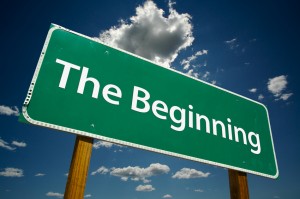 In a way, great ideas are everywhere, right? If you’re an entrepreneur, the ideas are probably coming to you in your dreams. But it turns out that there’s an order, a way to follow through on the ideas that makes more sense than another. Venture capitalist Fred Wilson describes it perfectly:
In a way, great ideas are everywhere, right? If you’re an entrepreneur, the ideas are probably coming to you in your dreams. But it turns out that there’s an order, a way to follow through on the ideas that makes more sense than another. Venture capitalist Fred Wilson describes it perfectly:
One of the mistakes I see entrepreneurs make is they move to business model before locking down strategy. The way I like to think about this is get the product right first, then lock down the strategy of the business, then figure out the business model.
Here’s the thing: it’s so logical to focus on the business model. You need a business model for long-term success, but as Mr. Wilson shares, he’s seen, “a lot of wasted energy building a team and a customer base that ultimately was not of value to the business.”
The part I want to focus on today is identifying a strategy. For this to work, I’m going to assume that you’ve figured out the product/market fit. However, if you haven’t, here’s a quick overview of what that will require.
This concept of product/market fit is an important one. You may think your idea is fantastic. Your mom may think your idea is fantastic. But do the people who you think need your idea agree? If only your immediate family and a few friends show much willingness to adopt whatever it is you’re selling, you may not have found the perfect product/market fit. So keep fine tuning your idea AND who you think falls in your market. Your goal is to refine to the point that “the market accepts your product and wants more of it.”
Now that you have your product/market figured out, it’s time to think through strategy and how to test your strategy. You can get started by thinking through these three questions.
1) What are the most common questions people asked when they first tried your product?
How did people see themselves using the product or service? Did they compare your offering to something else they already use? While this type of review is neither scientific nor foolproof, it can help focus your efforts.
By taking into account how people are already talking and thinking about your product (see product/market fit), you can avoid making a big, strategic mistake. Granted, you may wind up with a strategy that has little to do with early feedback, but failing to take it into account at the beginning means you’re ignoring a valuable resource: your potential customers.
2) If you have competitors, what are they doing wrong AND right?
It’s tempting to focus on what your competitors are doing wrong strategically, but just as important is analyzing and figuring out what they’re doing right. You may see an opportunity in something a competitor fails to do, but don’t let your strategy become so focused on the wrong that you miss where they’re doing something right.
3) Does your strategy pass the confirmation bias test?
We all fall into this trap with everyday decisions, let alone with our business strategy. Confirmation bias occurs when we come up with an idea that we then share, and are told in return is brilliant. However, the bias happens because we’re more likely to ask people who already think like we do.
So with that in mind, as you’re working through different aspects of your strategy, test them by asking people who aren’t likely to agree with you what they think. Their feedback will help identify weaknesses in the strategy, plus force you to think more logically about what you want to do. Also, if you’re pursuing a particular strategy used previously, go find what detractors had to say.
See if your strategy does anything to counter those detractors, or if you’re still susceptible to the highlighted weaknesses. The goal is to build a strategy that has more strengths than weaknesses, and, in a way, people who are generally opposed to you do a better job of identifying the weaknesses than your advocates.
Obviously forming a complete strategy for your product or service will take a lot more than three questions. But you should have a better sense of why Mr. Wilson is spot on with his advice to confirm your product/market fit and strategy before you think about tackling the business model.
So what do you think? Is this a good process? Have you used a different one? We would love to hear your thoughts in the comments below.

